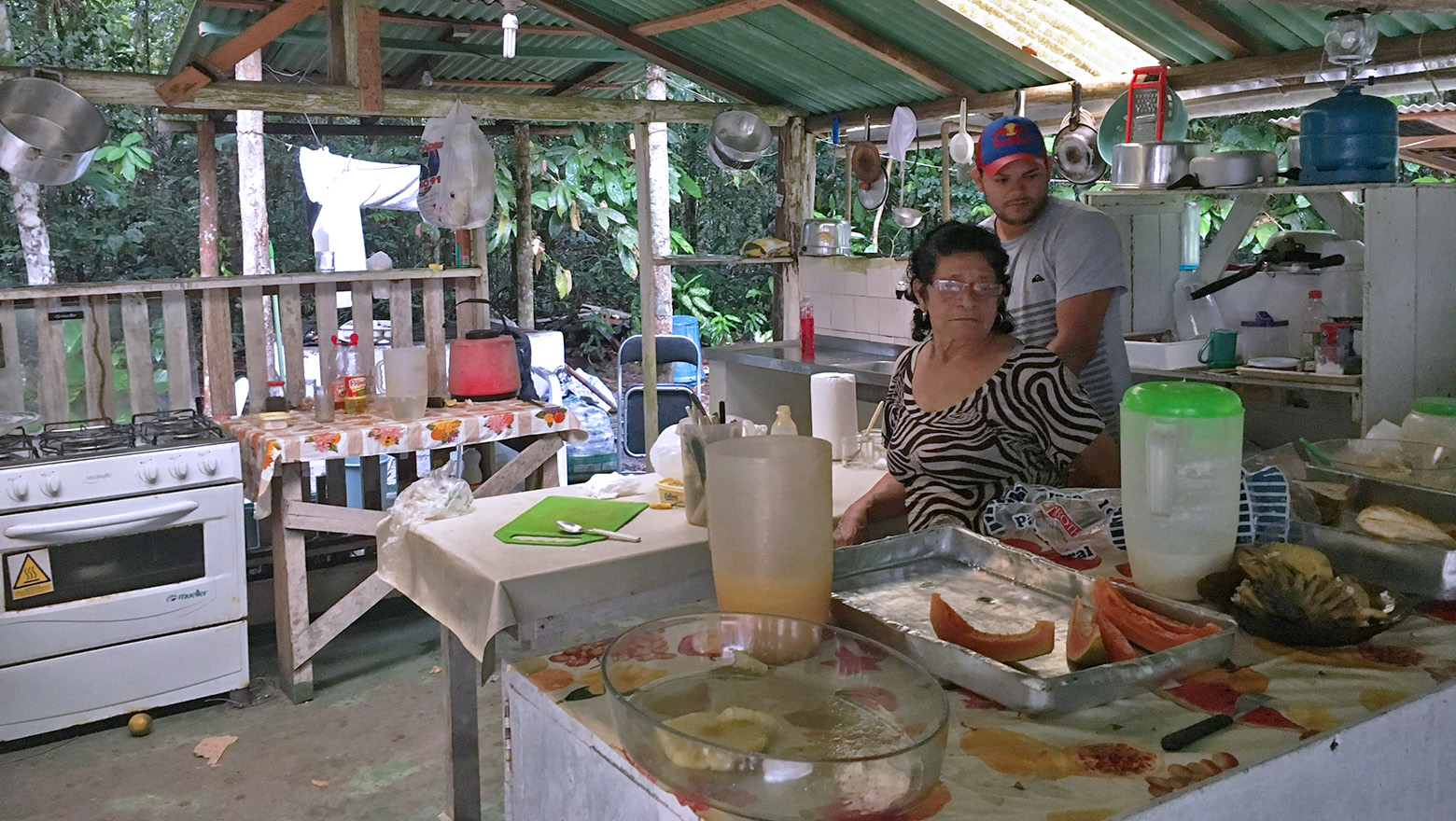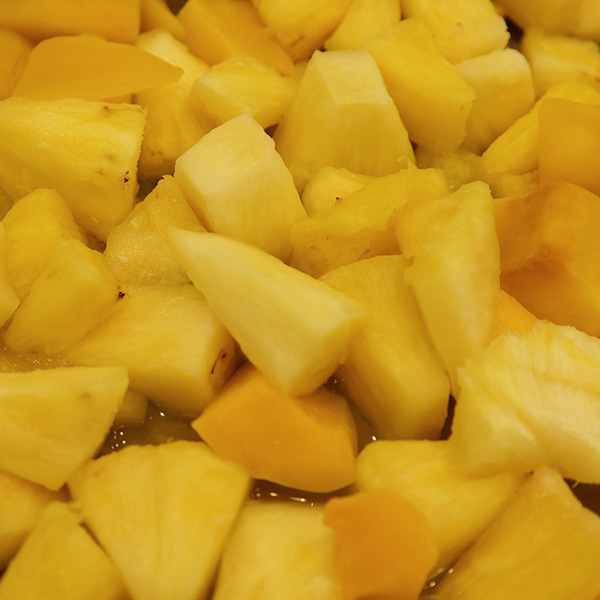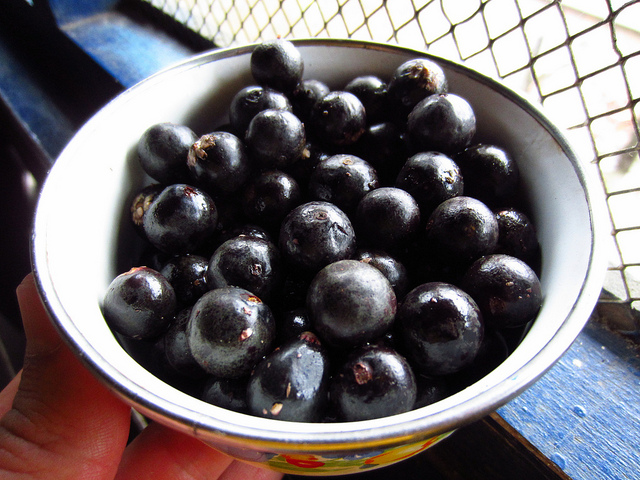
Camp 41's amazing cooks — a team headed by the Brazilian grandmother we all wanted to adopt — kept the Planet Forward crew full of fresh, local fruits at breakfast and lunch. (Planet Forward)

Camp 41's amazing cooks — a team headed by the Brazilian grandmother we all wanted to adopt — kept the Planet Forward crew full of fresh, local fruits at breakfast and lunch. (Planet Forward)
On my first morning in Manaus, Brazil, excitement filled my body as I hopped down the stairs of my hotel — my inner-self itching to step foot in the Brazilian sun and explore the city. Our plans for the day included the exploration of the Rio Negro and visiting giant water lilies — and this was just a prelude to packing up our gear and heading off-grid the following morning to the never-dry land of spiders and scorpions at Dr. Tom Lovejoy’s Camp 41.
But first — as my stomach reminded me, grumbling in hunger — breakfast. After an employee directed me to the restaurant, filled with a buffet of local foods, I perused the offerings and, oddly, skipped over my go-to favorite (carbs), because something else caught my eye: fruit.
Neatly arranged on silver platters in the middle of the buffet were fruits ranging from bright red watermelon to blood orange papayas to yellow honeydew, and all met my gaze as I crept around the fruit table like a jaguar circling its prey.
I paused. “Since when have I ever been this intrigued by fruit?” I thought.
Keeping an open mind, I stacked my plate with as much fruit as it could hold and walked over to a table, careful not to drop anything from my overflowing plate on the floor.
“The pineapple,” I thought as I sat down. “I’ll try this first.”
My knife cut like butter through the slice of pineapple and I took a bite.
I stopped chewing for a second. My eyes widened as the perfect, almost candylike sweetness of the pineapple struck my taste buds. It was the best damn pineapple I’d ever had. Immediately I knew I could never go back to its American cousin; it doesn’t hold a candle to Brazilian pineapple.

As I savored these fruits, I pondered: Why is the fruit in Brazil so good, and where does it come from? I knew I would have to do some research to learn more.
Conveniently, I learned, my trip to Brazil took me right to the source: The Amazon rainforest. The rainforest, which is as big as the continental United States, harbors more than 10% of the world’s species and is home to 350 ethnic groups.
The rainforest also serves as a feeding ground for both humans and animals through its fruit production. Boasting vast agricultural diversity, the Amazon rainforest is the source of least 3,000 fruits, while only about 200 of those are consumed in the Western world. It is home to fruits ranging from figs and lemons to bananas and guavas, the Amazon provides the state of Amazonas — and much of the world — with fruits created by Mother Nature herself.
José Luís Camargo, a Brazilian plant ecologist, researcher, and teacher who accompanied us on the trip to the Amazon, said the fruits from the rainforest are among the most unique in the world. Certain fruits like açaí — a highly nutritious purple berry — are special to the rainforest and are popular in not just Brazil, but other parts of the world, including America.

“More of the local fruits are rich — very rich,” Camargo said. “What happens for most of the people who live outside the Amazon — most of the fruits you don’t find other places. Only here.”
Vegetables, however, are not as popular. Camargo said there are some common vegetables used in meals, but joked that not a lot of Brazilians eat “leaves” like Americans do.
“Vegetables are not a thing — it depends on the vegetables. Some of them are very common, like tomate (tomato) … Part of the regular food here doesn’t go with salad.”
Being the third largest exporter of fruit, behind China and India, respectively, Brazil also showcases the diversity of its fruits. From açaí, camu camu (a vitamin C-packed so-called “superfood”) to maracuyá (passionfruit) and aguaje (which has a high concentration of vitamin A, as well as vitamins E and C), Brazil produces exotic fruits that make even the biggest foodies marvel at the uniqueness of the sweet delectables — and the nutritional impact they can provide both locals and consumers in other countries.
Over the past several years, the fruit industry in Brazil has risen 25%, dominating the country’s export economy, and provided 5.6 million jobs. About 35% of the world’s oranges come from Brazil and more than half of the world’s orange juice is made there, too. In 2013, 14,598 tons of oranges were exported by Brazil, serving countries like the United States, Germany, Uruguay, France and more.

Beyond the economic and nutritional impact, Camargo said the fruit is a big part of what makes the Amazon special.
It’s what gives Camargo a sense of home — no matter where he travels in Brazil. For others in the city of Manaus, it’s how they make a living — selling fruits in small shacks outside, under the blaze of the Brazilian sun. For me? The fruit created a sense of comunidade.
“Community” in Portuguese, comunidade is what I felt as I turned every corner in Brazil. I felt it from its people, its music, and, yes, its fruit.
In fact, it was the fruit that brought all of us together during our time at Camp 41 — the home base for a series of scientific studies done deep in the Amazon.
With no technology embedded in our hands — and little knowledge about each other — our gatherings at the seemingly out of place, red-checkered tablecloth-clad picnic tables in the middle of the rainforest, nibbling on the sweetest of fruits that came from the rainforest made me simply happy. It’s the comunidade that moves the Planet Forward.
While others marveled at the abundance of insect and animal life in the rainforest, I marveled at the fruit. The fruit was pure — it came from the heart of the Amazon to the table. No factories involved. No planes. Just forest to table.